Samsung Galaxy A73 Review [With Video Review]
The Galaxy A73 Is An Attractive, Well-Built, And Efficient Mid-Range Device That Unfortunately Sells For The Same Price As The Best Economic Flagships; Check Out The Galaxy A73 5G With Us.
Last year, the Galaxy A72 was entirely overshadowed by the Galaxy A52. Apart from the telephoto camera and the 500 mAh battery, the higher capacity of the storm did not offer any other significant feature to justify its multi-million toman price difference from the A52. Still, this year, the Koreans have adopted a different strategy with the Galaxy A73 and Galaxy A53, highlighting the difference between the two phones.
The Galaxy A73 carries “Samsung’s first mid-range phone with a 108-megapixel camera” and is powered by a much more efficient chip than the Galaxy A53. Still, the price tag of 14 to 15 million Tomans puts this smartphone against more dangerous competitors such as the Galaxy S21 FE, Xiaomi 11T Pro, and OnePlus 9R; Follow the review of Galaxy A73 with Us.
Design and build quality of Galaxy A73
While some competitors have a glass body, the Galaxy A73 still uses a completely plastic structure; But at least in terms of build quality and design, it is not inferior to its competitors; The pieces fit snugly together, and even the Gorilla Glass 5-screen cover is mounted directly on the frame without any plastic tape around it; This is something that we usually see inexpensive devices.
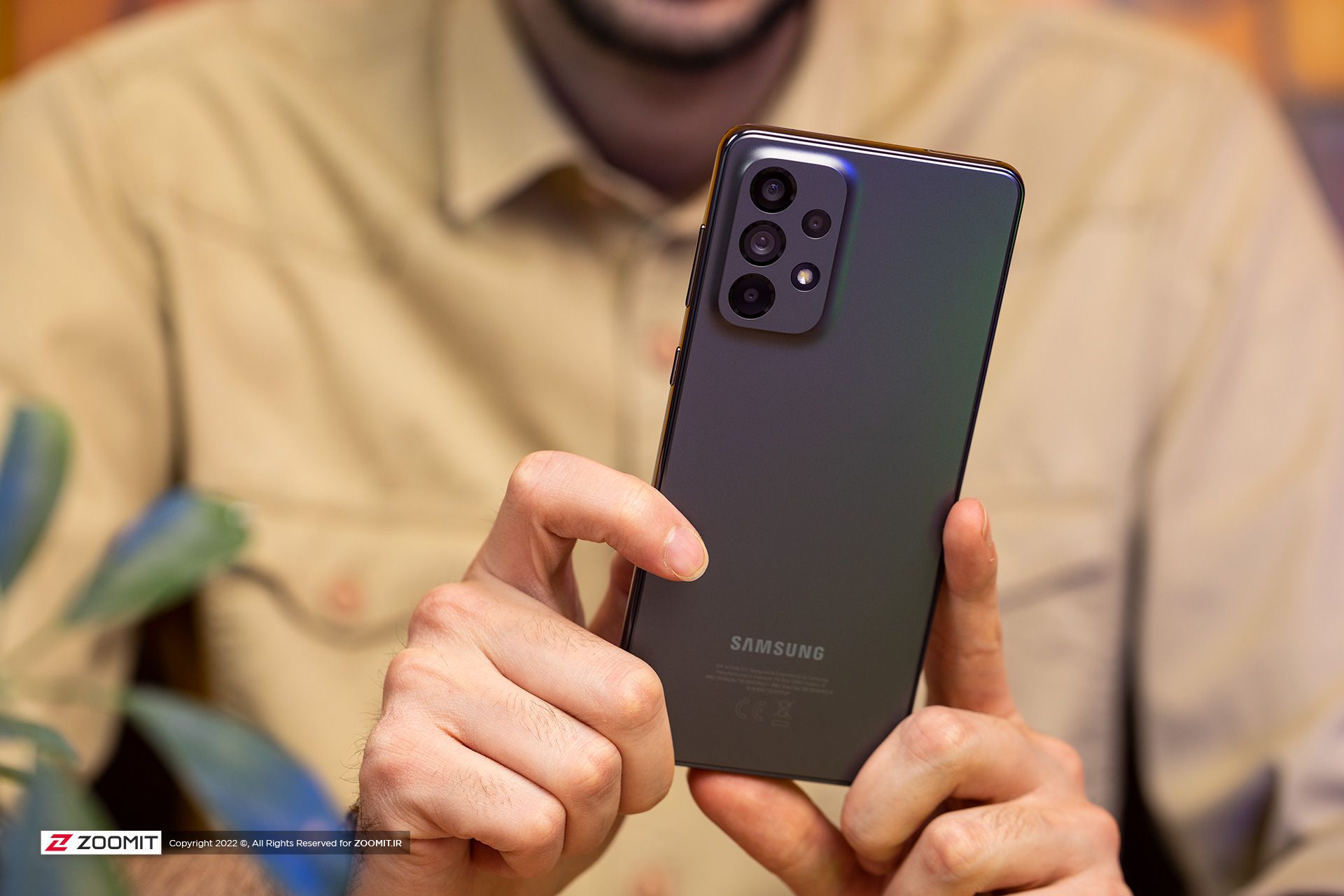
Samsung’s powerful midrange is 0.8 mm thinner and 22 grams lighter than the previous generation (181 grams vs. 203 grams); Although we are dealing with a relatively large 6.7-inch phone, the lightness of the body will catch your eye from the very beginning when you pick up the Galaxy A73. The phone conveys an excellent feeling to the user, But to access the keys, the notification bar, or the fingerprint sensor, you have to move it in your hand constantly.

The appearance of the Galaxy A73 is very similar to the Galaxy A53; The same rectangular ledge integrated with the back panel, the same glossy flat plastic frame, and the same matte body; It looks like the Galaxy A53 has been pulled from both sides and made 0.2 inches bigger. The protrusion of the camera causes the E73 to slip on the table surface, But not so much that we know of some flagship phones with giant cameras.
The Galaxy E73 is available in gray, green, and white; We reviewed the gray model of the phone and almost agreed on the charm and beauty of this model. The Galaxy E73 does not take up much fingerprint, but the hand’s fat remains on the body.
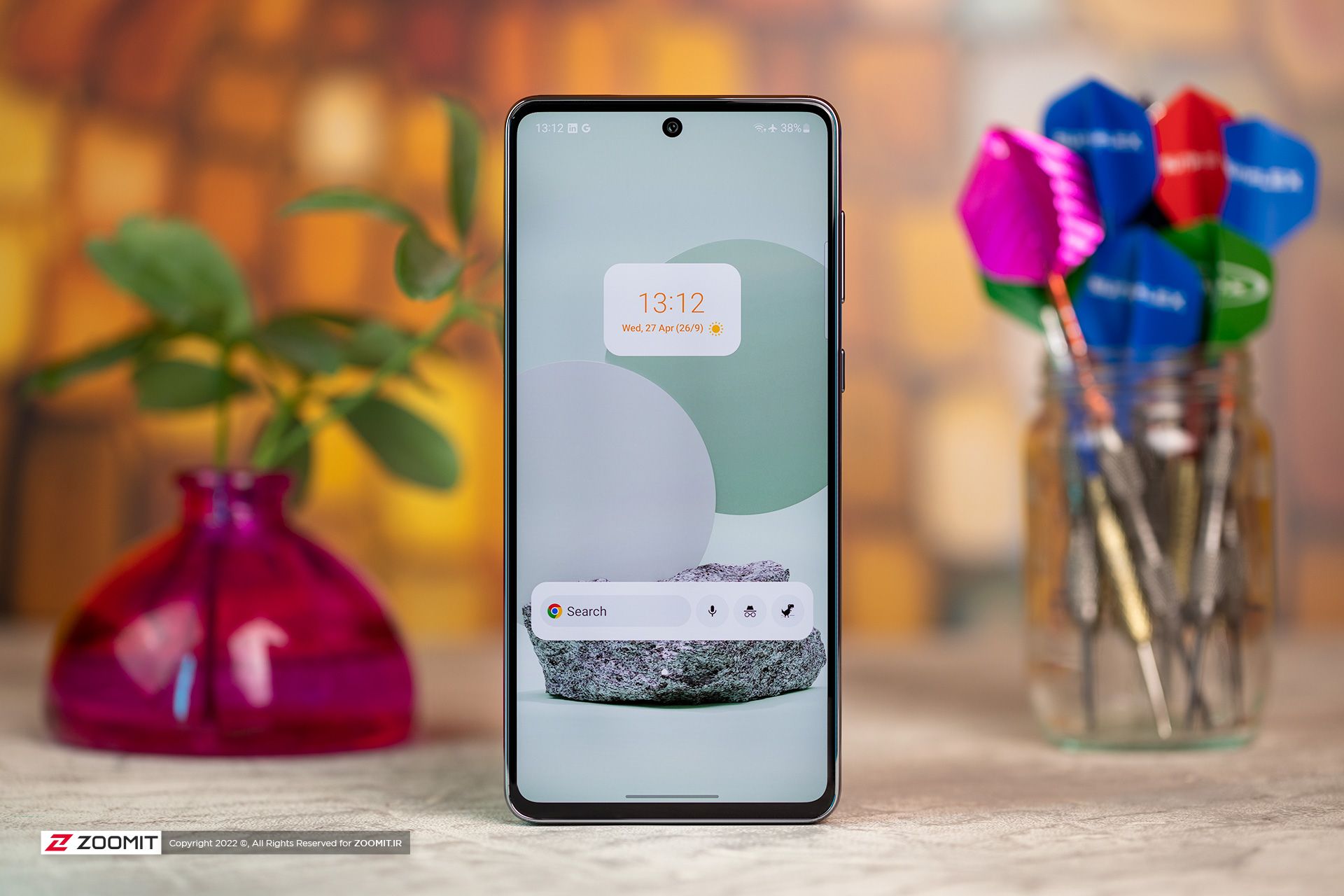
The physical keys of the Galaxy E73 are plastic and do not have the pleasant feedback of flagship devices. The fingerprint sensor is located below the display and provides accurate and relatively fast operation, but the sensor’s location is a little lower than we are used to; You have to move your hand around the body to unlock the phone. The Koreans also removed the 3.5mm headphone jack from the Galaxy A73 mid-range phone.
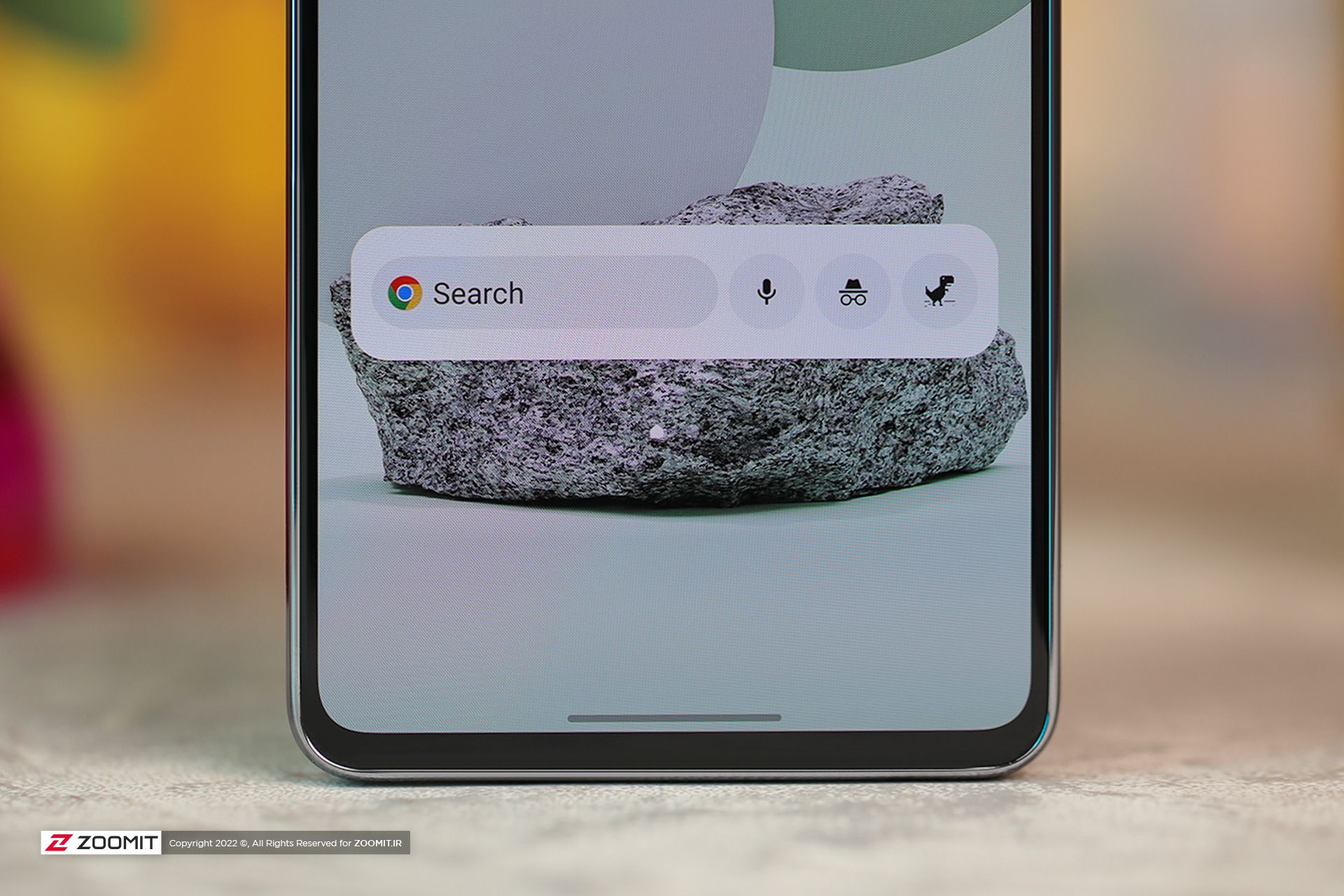
The Galaxy A73, like the previous generation, has received IP67 certification from the IEC Institute; This means that, at least on paper, the phone can withstand water pressure at a depth of one meter for up to 30 minutes. Note that a competitor such as the Galaxy S21 FE is IP68 certified.
Galaxy A73 display and speaker
It’s Leaving aside the upgrade rate of 90Hz to 120Hz, the Galaxy A73’s display does not improve much compared to the previous generation; We are with the same 6.7-inch OLED panel with a resolution of 2400 x 1080 pixels and a 20: 9 aspect ratio, which with its excellent resolution of 393 pixels, makes it difficult to distinguish the pixels from the naked eye. On the other hand, the edges around the E73 display are narrower than before.
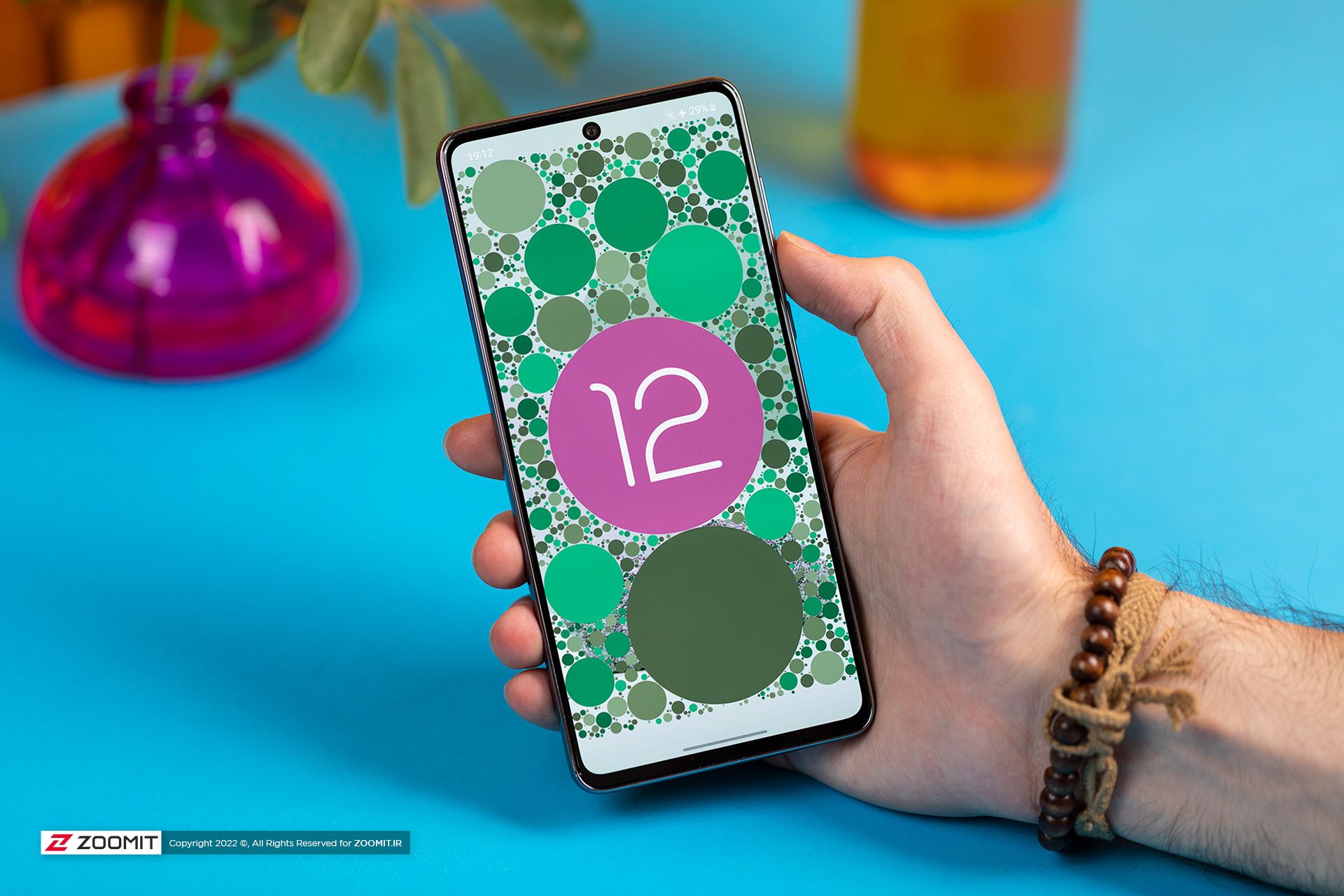
The Galaxy A73 display supports a refresh rate of 120 Hz, But the expectation of variable rates is not news. The device keeps the refresh rate constant at 120 Hz in all conditions and only in apps that do not support such a rate; Like the camera app or the Genshin Impact game, it resets the refresh rate settings to 60 Hz. The high screen refresh rate makes the Galaxy E73 a fun experience by streamlining UI animations and browsing.
Measurements show that the Galaxy A73 reaches 552 and 1093 nits in manual and automatic mode, respectively; In this way, the Samsung mid-range phone in automatic mode can bring you excellent readability in the sun. On the other hand, the nature of OLED also allows the Galaxy E73 to produce intense black and incredibly high contrast.
Performance of Galaxy A73 5G display against competitors | ||||||||||
|---|---|---|---|---|---|---|---|---|---|---|
| Product ام Parameters | Minimum brightness | Maximum manual brightness | Maximum automatic brightness | Native contrast ratio | Average color error | |||||
| White | Black | White | Black | White | Default mode | The most accurate mode | ||||
| Galaxy A73 5G | 2.0 | ۰ | 552 | ۰ | 1093 | ∞ | 3.6 (Vivid) | 1.4 (Natural) | ||
| Galaxy A53 | 2.44 | ۰ | 640.5 | ۰ | 1290 | ∞ | 3.3 | 1.9 (Natural) | ||
| Galaxy A52s 5G | 2.3 | ۰ | 607.5 | ۰ | 1305 | ∞ | 4.8 | 3.1 (Natural) | ||
| Xiaomi 11 Lite 5G NE | 2.6 | ۰ | 669.5 | ۰ | 905 | ∞ | 3.7 | 1.2 (Original) | ||
| Galaxy S21 FE | 2.3 | ۰ | 581.5 | ۰ | 1117.5 | ∞ | 3.8 (Vivid) | 2.3 (Natural) | ||
| Xiaomi 11T Pro | 2.3 | ۰ | 637 | ۰ | 805 | ∞ | (4) 3) Vivid | (1.1) Standard | ||
| Galaxy S20 FE | 2.2 | ۰ | 608 | ۰ | 1270 | ∞ | 4.6 (Vivid) | 2.2 (Natural) | ||
| May 11 | 1.5 | ۰ | 563 | ۰ | 830 | ∞ | 3.6 (Auto) | 1 (Original Color) | ||
All the results obtained from experiments are in the same laboratory conditions.
The Galaxy A73 also displays colors; reviews show that this mid-range phone covers the sRGB and DCI P3 color spaces in Natural and Vivid color profiles, respectively. The colors in the Natural shape are very accurate and neutral, and in the other profile, they are relatively precise and excellent.
Samsung’s new media player does not officially have HDR video playback certification and converts and plays these videos to SDR; But Zumite studies show that the Galaxy A73 responds to YouTube HDR video playback and changes the screen brightness to suit the video data itself; Of course, the intelligence does not exceed the number of about 1100 nits obtained in tests.
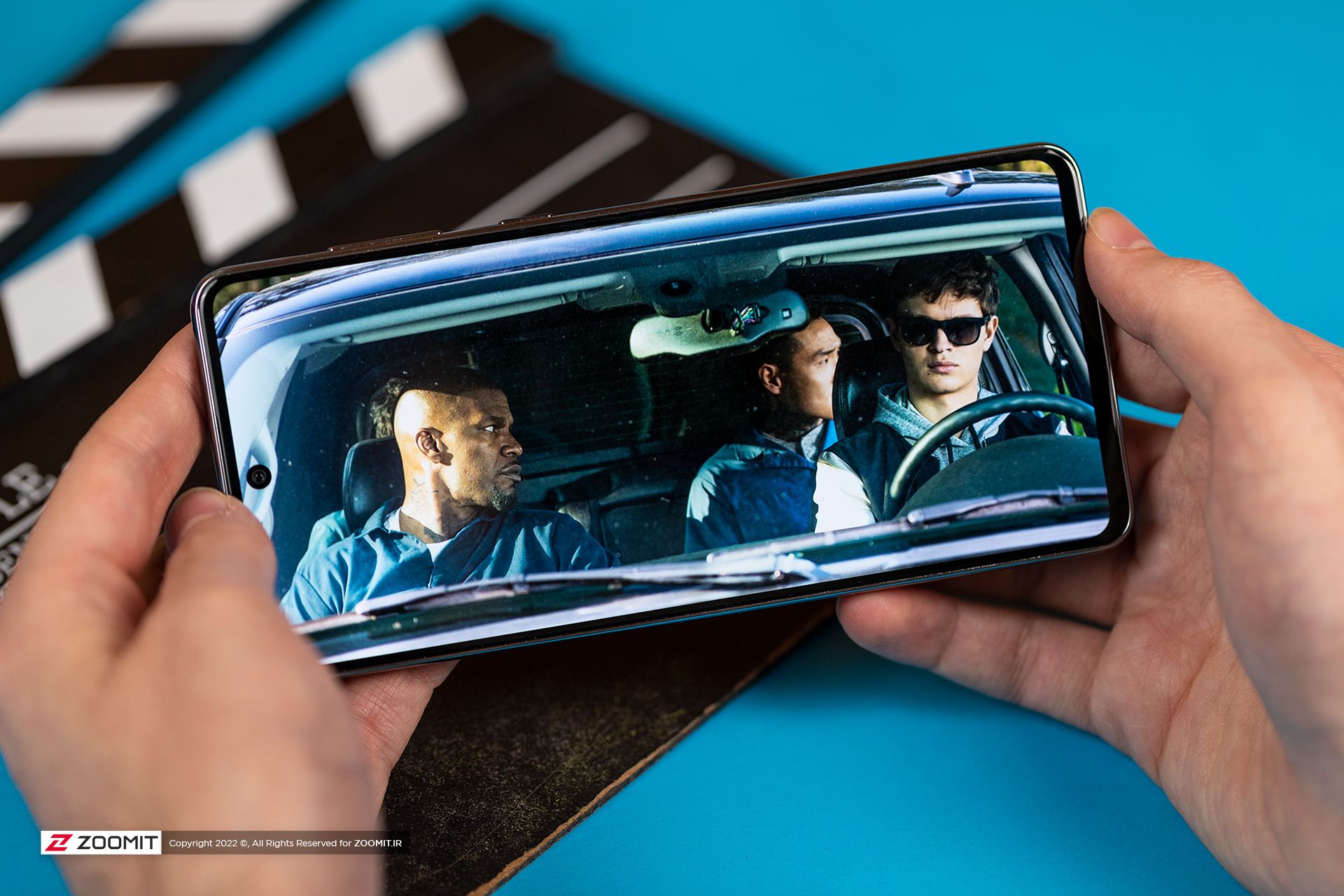
The Galaxy A73 uses stereo speakers; One of the channels is at the bottom of the frame; While the call speaker on the top edge of the screen acts as a second channel. The volume of the two channels is not as balanced as that of the flagship devices, and it is easy to see that the flow channel produces a large part of the volume.
Our reviews show that the Galaxy A73 generates low and medium frequencies well; Thus, most of the musical instruments and the voice of the singer are heard; But sometimes, at high frequencies, the sound is disturbed. The phone has percussive axes and, thanks to Dolby Atmos support, also allows the user to produce surround sound.
Software and user interface of Galaxy A73
The Galaxy A73, like the Galaxy S22 and Galaxy A53 families, comes with Android 12 and One UI 4.1 by default, So in appearance, it is not much different from One UI 4. Earlier in the review of One UI 4, we put the features of this user interface under a magnifying glass. Still, One UI 4.1 is experiencing minor improvements over version 4.0, which we’ll cover below.
RAM Plus was first introduced with One UI 4.0, the Ability to allow the user to use 4 GB of smartphone storage memory as extra RAM, But with One UI 4.1, the user can choose the amount of this extra RAM from 2, 4, 6 or 8 GB.
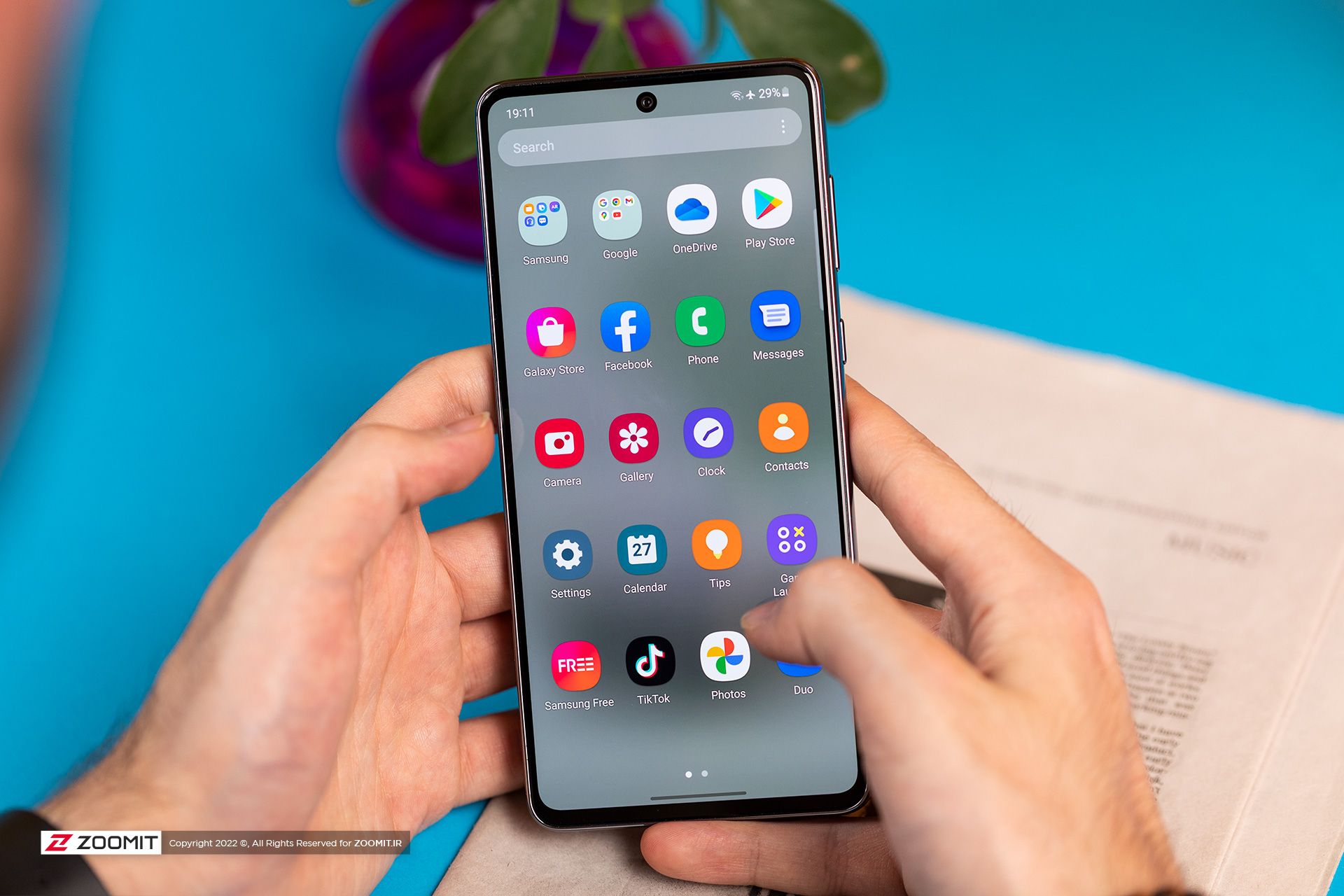
The Smart Calendar feature allows the Samsung Calendar app to access the dates and times mentioned in text messages as events in the calendar. The Koreans say Smart Calendar will be compatible with the phone’s default messengers and apps such as Line, WhatsApp, Viber, and Signal, But it is unclear what will happen to apps like Microsoft Thames and Telegram.
In One UI 4.1, Samsung introduces a Smart Widgets feature that works similarly to Apple’s Smart Stacks, allowing users to merge multiple widgets and switch between views by swiping. One UI intelligent devices are available in three sizes.
One UI 4.1, thanks to the powerful Snapdragon 778G chip and, of course, software optimizations, has fast and smooth performance on the Galaxy A73; As in everyday use, it is difficult to tell the difference between this mid-range phone and Samsung flagship devices.
Performance, gaming experience, and battery life of the Galaxy A73
We expected Samsung to use flagship chips a few years ago, such as the Snapdragon 865 or Snapdragon 870, in its relatively expensive midrange; But that did not happen, and the Koreans equipped the Galaxy A73 with a Snapdragon 778G mid-range chip, just like the Galaxy A52s; The chip is made with 6-nanometer TSMC lithography and therefore offers better and lower performance compared to the recent flagship chips from Samsung and Qualcomm.
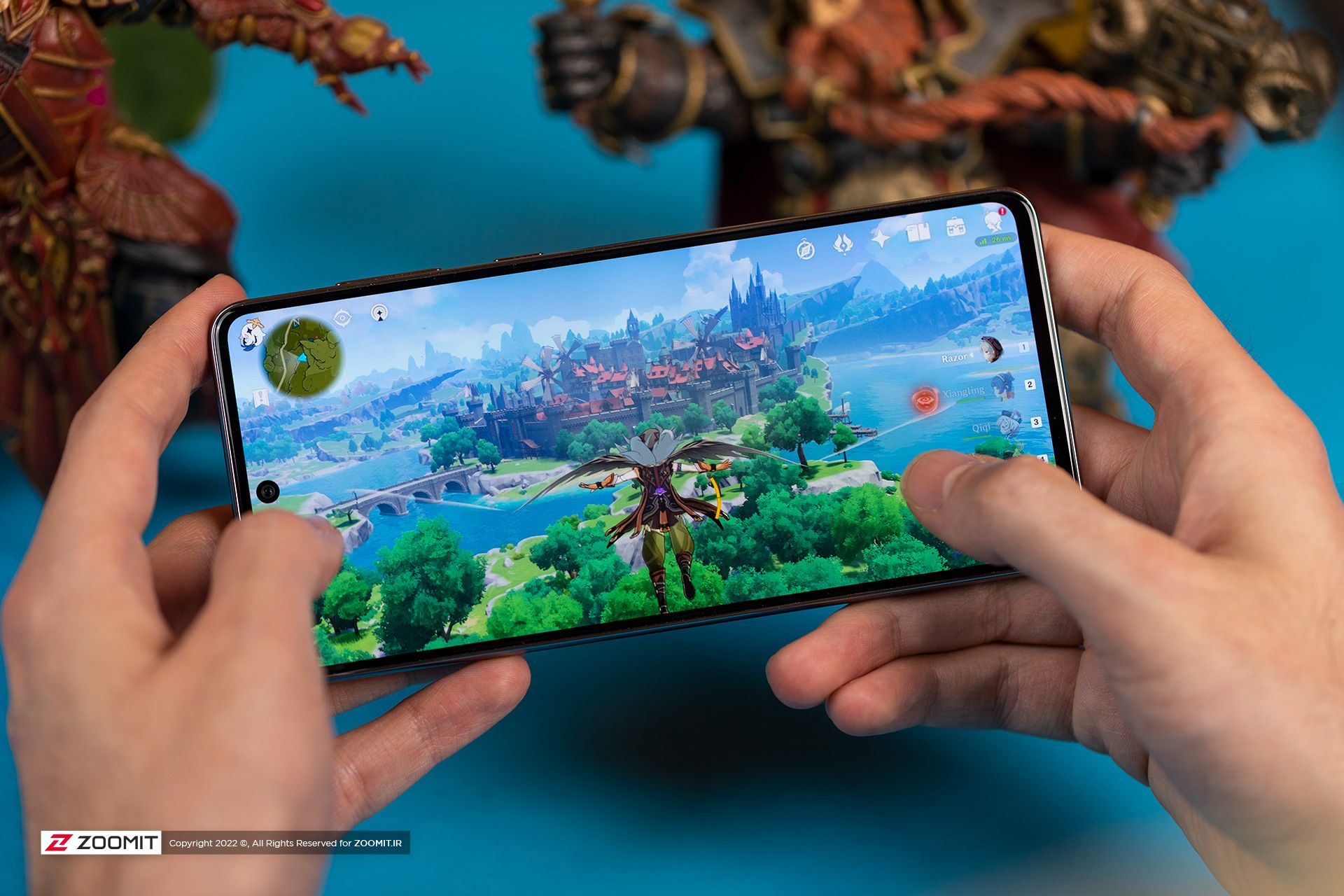
Unlike the Snapdragon 780G, which uses three clusters, the Snapdragon 778G uses a combination of a 2.4 GHz quad-core Cortex A78 and a quad-core 1.8 GHz Cortex A55 in the form of two high-power, low-power clusters. Adreno relies on 642L.
The Snapdragon 778G, thanks to Qualcomm X53 modem, supports multi-band 5G networks below 6 GHz and mmWave with a maximum download speed of 3.7 Gbps; The FastConnect 6700 module, on the other hand, provides connectivity to Wi-Fi 6E and Bluetooth 5.2 networks.
Galaxy A73 in versions 6 | 128, 8 | 128, and 8 | 256 GB is for sale, and it seems that both 8 GB models can be found in the Iranian market. We had Samsung’s midrange in the 256GB model for review. Note that if you do not use a second SIM card, you will be able to upgrade the storage space through the microSDXC port.
Galaxy A73 5G storage memory performance against competitors | ||||
|---|---|---|---|---|
| Models ٫ Performance | Sequential reading rate (MB / s) | Sequential writing rate (MB / s) | Random reading rate (MB / s) | Random writing rate (MB / s) |
| Galaxy A73 5G | 948.29 | 788. 16 | 177.63 | 197.0 |
| Galaxy A72 | 507. 33 | 267. 86 | 139. 34 | 125. 63 |
| Galaxy S21 FE | 1843. 27 | 1282.2 | 319. 11 | 284. 65 |
| Galaxy A53 | 514. 41 | 495.25 | 233.56 | 202. 48 |
| Xiaomi 11 Lite 5G NE | 909. 32 | 759. 17 | 202.9 | 200.2 |
| Galaxy S20 FE | 1572.95 | 674. 77 | 199. 44 | 236. 32 |
| Xiaomi 11T Pro | 1902. 75 | 770. 29 | 230 | 209 |
* All benchmarks mentioned in this table have been implemented.
The Galaxy A73’s storage memory significantly improves over the previous generation; Its sequential write rate is three times that of the Galaxy A72. The Galaxy E73 continues to dominate the last generation in chip benchmarks. Samsung’s new midrange is up to 73% faster than before and has 94% more powerful graphics.
The Galaxy A73 performs similarly to the Galaxy A52s and looks better than the Galaxy A53; But the price tag of the phone forces us to compare it with the economic flagships of the market; Where the Galaxy A73 leaves the arena to rivals; The cheaper Xiaomi 11T Pro is up to 22 percent faster and, with a 94 percent difference, performs better in graphics processing than Samsung’s midrange.
| Performance of Galaxy A73 5G against competitors | |||||||||
|---|---|---|---|---|---|---|---|---|---|
| Name and performance of the benchmark/product | PCMark | Speedometer 2.0 | GeekBench 5 | GFXBench | |||||
| Overall performance | browser | GPU | CPU | Game simulator (frame rate) | |||||
| Volcano / Metal | Single Core Multi-Core | Aztec Ruins Onscreen / 1440p | Car Chase Onscreen / 1080p | ||||||
| OpenGL | Volcano | Metal | OpenGL | Metal | |||||
| Galaxy A73 5G (120Hz) | 12384 | 55. 35 | 2419 | 782 2870 | 20 13 | 20 14 | – | 29 33 | – |
| Galaxy A72 | 8577 | 40.6 | – | 549 1657 | 10. 6.9 | 11 7.1 | – | 15 17 | – |
| Galaxy A52s 5G (120Hz) | 12295 | 49.6 | 2410 | 771 2793 | 19 13 | 20 14 | – | 28 33 | – |
| Galaxy S21 FE (120Hz) | 14030 | 43.48 | 5718 | 1070 3343 | 42 22 | 43 26 | – | 55 61 | – |
| Galaxy A53 (120Hz) | 11650 | – | 2544 | 748 1915 | 14 10 | 14 10 | – | 19 24 | – |
| Xiaomi 11 Lite 5G NE (90 Hz) | 10166 | – | 2307 | 790 3,000 | 20 13 | 20 14 | – | 29 33 | – |
| Galaxy S20 FE (120Hz) | 12044 | 62.4 | – | 924 2751 | 31 22 | 18 20 | – | 40 47 | – |
| Xiaomi 11T Pro (120Hz) | 13336 | 74.52 | 4554 | 815 3499 | 42 27 | 45 30 | – | 59 64 | – |
* All benchmarks mentioned in this table have been implemented.
Aside from CPU and GPU-centric benchmarks, the Galaxy A73 performs more or less similar to the flagship devices such as the Xiaomi S21T Pro and the flagship devices in everyday applications such as browsing, messaging, browsing social networks, or navigating through various parts of the user interface. They are not as hot as they used to be.
The Galaxy A73 also looks very satisfying in the gaming experience; We ran the famous Call of Duty game and the cumbersome game Genshin Impact on a Samsung interface. Call of Duty game with high graphics settings offers a stable frame rate of 60 frames per second. On the other hand, the open-world playground Genshin Impact in Medium graphics settings achieves a very steady frame rate of 52 frames per second, which is a fantastic result.
Performance of Galaxy A73 5G in running mobile games | ||
|---|---|---|
| Mobile game title | Graphic settings of the game | Frame rate |
| Genshin Impact | Medium | 52 frames per second |
| Call of Duty Mobile | High | 60 fps |
* All benchmarks mentioned in this table have been implemented.
We used GameBench software to obtain the above table frame rates.
We also ran Genshin Impact on the Galaxy S21 FE simultaneously; the phone reached an average frame rate of 55 frames per second, higher than the 52 frames per second of the Galaxy A73. Still, if you look at the chart below, you will notice that Samsung’s economic flagship is not as stable as the Galaxy E73, which also gets very hot during the game.

Aside from the superiority of the Galaxy A73 over the Galaxy S21 FE, it should note that the S21F uses a highly unstable and non-optimal Exynos 2100 chip. You can get better results with the Galaxy S20 FE 5G; This is because the phone uses the Snapdragon 865 chip, which is both more powerful than the Snapdragon 778G and much more stable than the Exynos 2100.
Like the previous generation, the Galaxy A73 relies on a massive 5,000 mAh battery to support its power needs and also supports 25-watt wired charging; But there is no more charger in the box of the phone, and you have to provide it separately; While a powerful competitor like the Xiaomi 11T Pro comes by default with a super-powerful 120-watt charger.
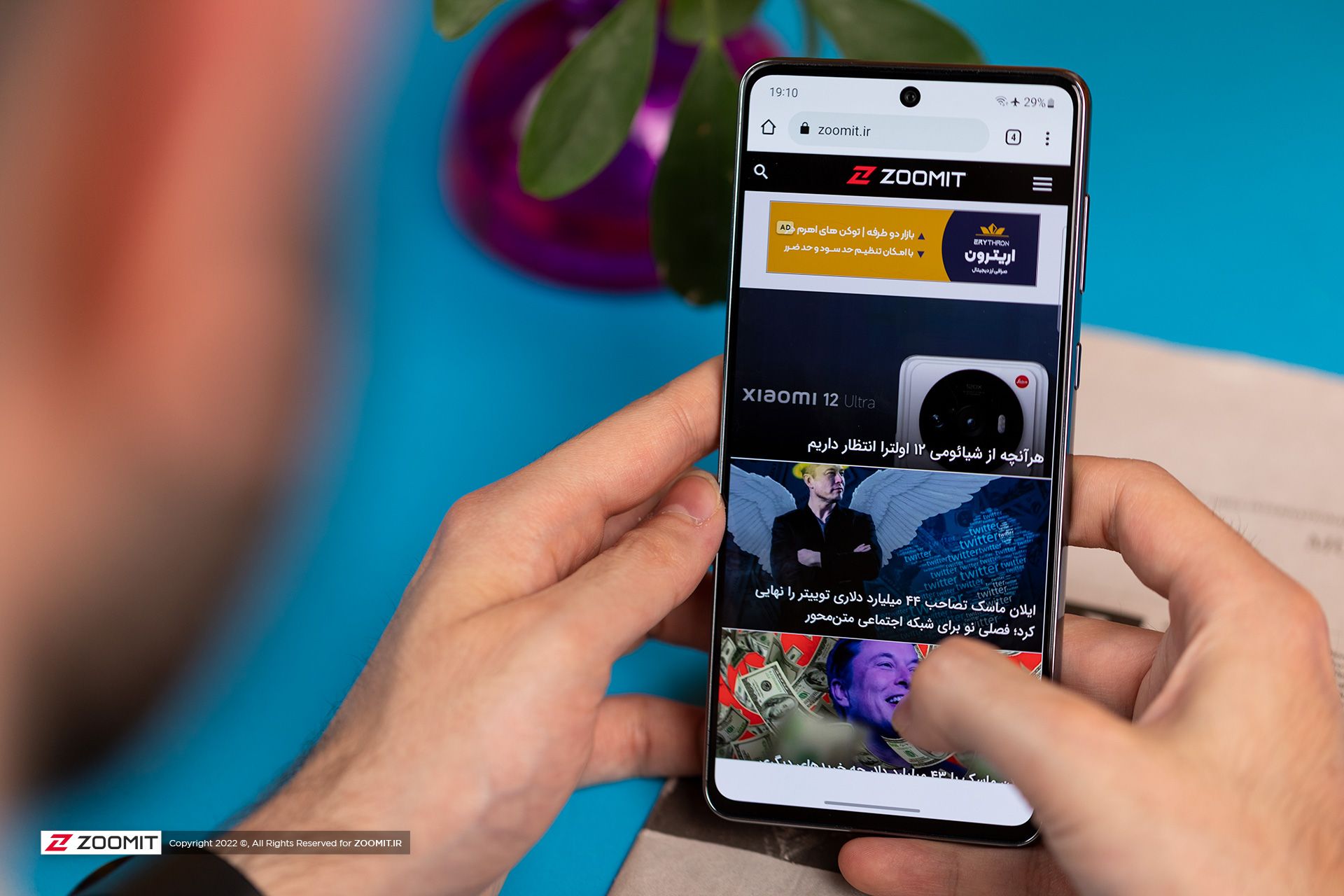
Samsung says the Galaxy A73 can last up to 2 days on a single charge, But to what extent is this claim valid? According to the review routine, we set the brightness to 200 nits (just over 50%) and the refresh rate to the best (120Hz). We disconnected all wireless connections along with the speakers’ audio output.
Battery performance of Galaxy A73 5G against competitors | |||||
|---|---|---|---|---|---|
| Product ٫ Test | Display | Battery | Time required to charge | Video playback | PCMark |
| Dimensions and resolution | Million amp-hours | Minutes: hours | Minutes: hours | Minutes: hours | |
| Galaxy A73 5G (120Hz) | 6.7 inches 2400 × 1080 pixels | 5000 | – | 18:29 | 10:33 |
| Galaxy A73 5G (60Hz) | 6.7 inches 2400 × 1080 pixels | 5000 | – | – | 13:39 |
| Galaxy A72 (90 Hz) | 6.67 inches 2400 × 1080 pixels | 5000 | – | 16:35 | 13:05 |
| Galaxy A53 (120Hz) | 6.5 inches 2400 × 1080 pixels | 5000 | – | 18:27 | 12:13 |
| Galaxy A52s 5G (120Hz) | 6.5 inches 2400 × 1080 pixels | 4500 | 1:28 | 18:10 | 10:13 |
| Galaxy S21 FE (120Hz) | 6.4 inches 2400 × 1080 pixels | 4500 | 1:15 with 25 watt charger | 16:36 | 8:58 |
| Galaxy S20 FE (120Hz) | 6.5 inches 2400 × 1080 pixels | 4500 | – | 14:41 | 8:30 |
| Xiaomi 11T Pro (120Hz) | 6.67 inches 2400 × 1080 pixels | 5000 | 00:18 with 120 watt charger | 18:10 | 9:58 |
* All benchmarks mentioned in this table have been implemented.
In the PCMark battery test, which measures device charging during everyday use, such as browsing and browsing social networks, the Galaxy A73 lasted 10 hours and 33 minutes, which is an excellent result; But 2 hours and 30 minutes less than the result for the Galaxy A72. By changing the refresh rate to 60 Hz, we reached a time of 13:39 minutes; So if you are not happy with the charging of the Galaxy E73, you can improve the battery life by 30% with the 60Hz refresh rate.
Galaxy A73 camera
The Galaxy A73 is Samsung’s first mid-range camera with a 108-megapixel camera; The same sentence can increase your expectations of this phone; Of course, you should note that the 108-megapixel sensor of the Galaxy E73 is not the same as the module used in the Galaxy S21 Ultra and Galaxy S 22 Ultra, and is 36% smaller. Unfortunately, there is no telephoto camera in Samsung’s new midrange. The Koreans have used a 5-megapixel depth gauge instead; In the following, we will get more familiar with the Galaxy A73 cameras.
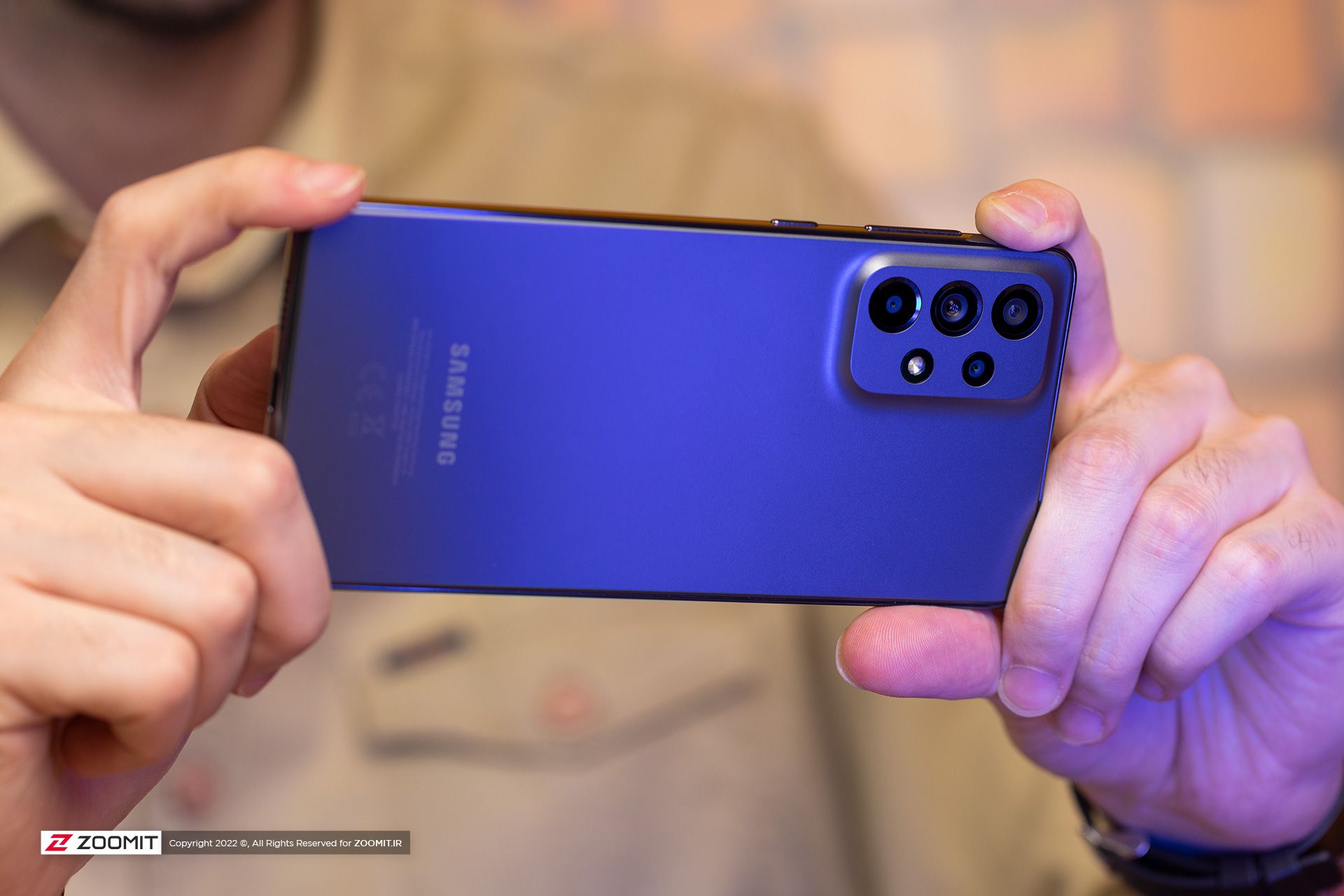
The Galaxy A73’s primary camera uses Samsung’s HM6 sensor; The 1.8-inch 108-megapixel sensor with 0.64-micrometer pixels captures all nine adjacent pixels in one color using the NonaCell color filter. The larger pixel gets 1.92 microns, absorbing more light. Brighter photos help in dimly lit environments. The primary camera uses phase-detection autofocus and is behind the lens with an f / 1.8 aperture and optical image stabilization (OIS).
The Galaxy E73 ultraviolet camera uses Sony’s 12-megapixel IMX258 sensor with dimensions of 1 / 3.06 inches and 1.12-micrometer pixels and is located behind a lens with an aperture of f / 2.2 and a field of view of 123 degrees; As expected, there is no optical image stabilization or autofocus on the Ultraviolet camera. The Galaxy A73 uses two 5-megapixel GC5035 modules for macro photography and depth measurement, and lenses accompany these two sensors with an f / 2.4 aperture.
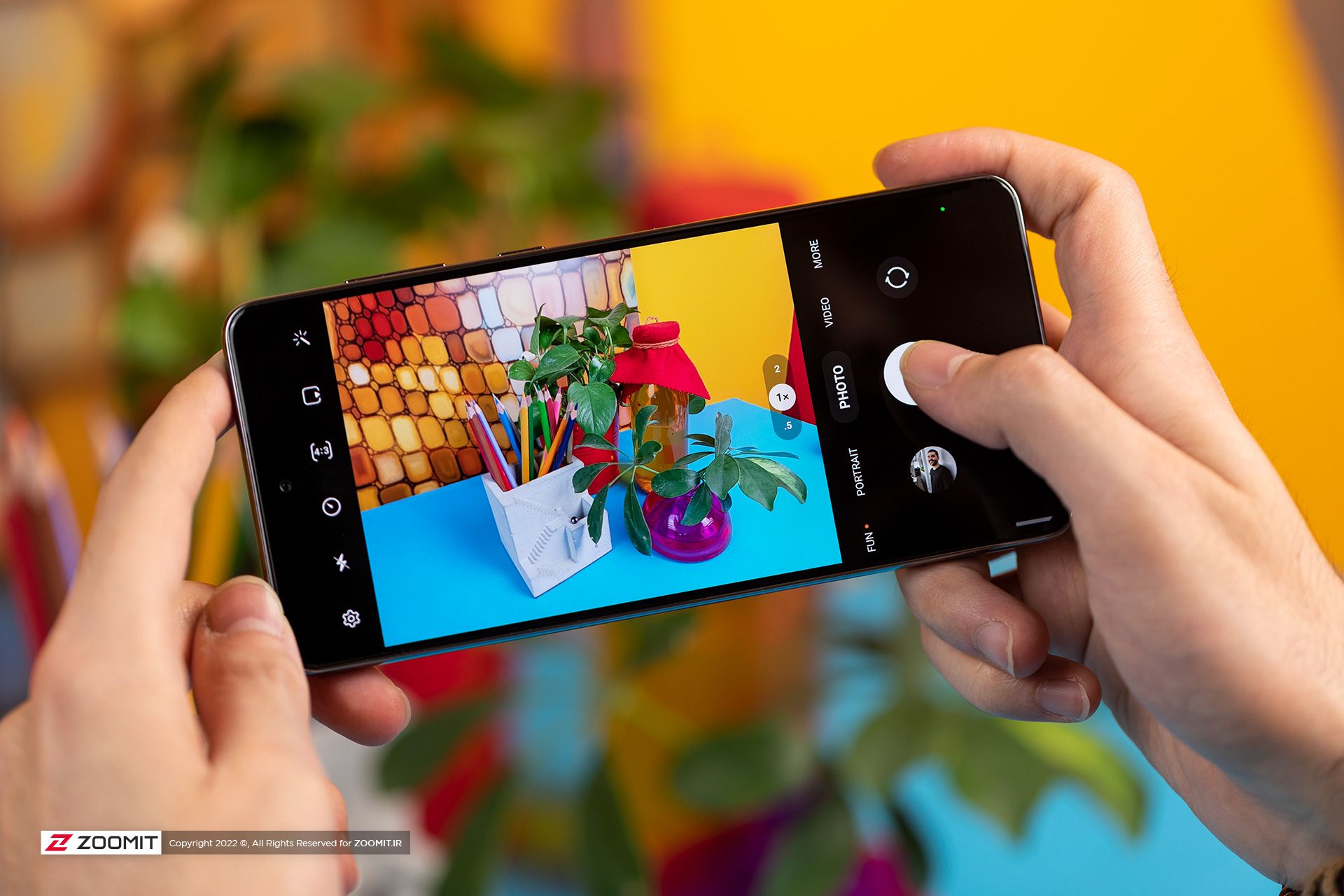
Like the Galaxy S21 FE, Samsung’s midrange relies on Sony’s 32-megapixel IMX616 sensor with 1.8 inches and 0.8 microns pixels for selfies and is mounted on the back of a 26mm lens with f / 2.2. The IMX616 sensor uses a Quad Bayer color filter, so it typically captures an image with a resolution of 8 megapixels; Surprisingly, the Galaxy E73 takes a 12-megapixel Upscale after taking the photo.
Dynamic range, details, and colors of the Galaxy A73 camera
At first glance, it seems that the Galaxy A73 and S21 FE have taken more or less similar photos; We are faced with attractive colors and high contrast, especially in the Galaxy E73 photo; But by zooming in on different parts of the image, you can see some slight differences; The Galaxy S21 FE brings more detail to the bright area of the image (window) and provides a clearer picture of the plant’s leaves and the pattern on the pot. Both photos tend to be warm, But this issue is more visible in the image of Galaxy E73.
The Galaxy A73’s ultraviolet camera also offers attractive colors and does not even have the warmth of the primary camera colors. Still, in terms of detail and multi-head noise level control, it is lower than the 108-megapixel camera.
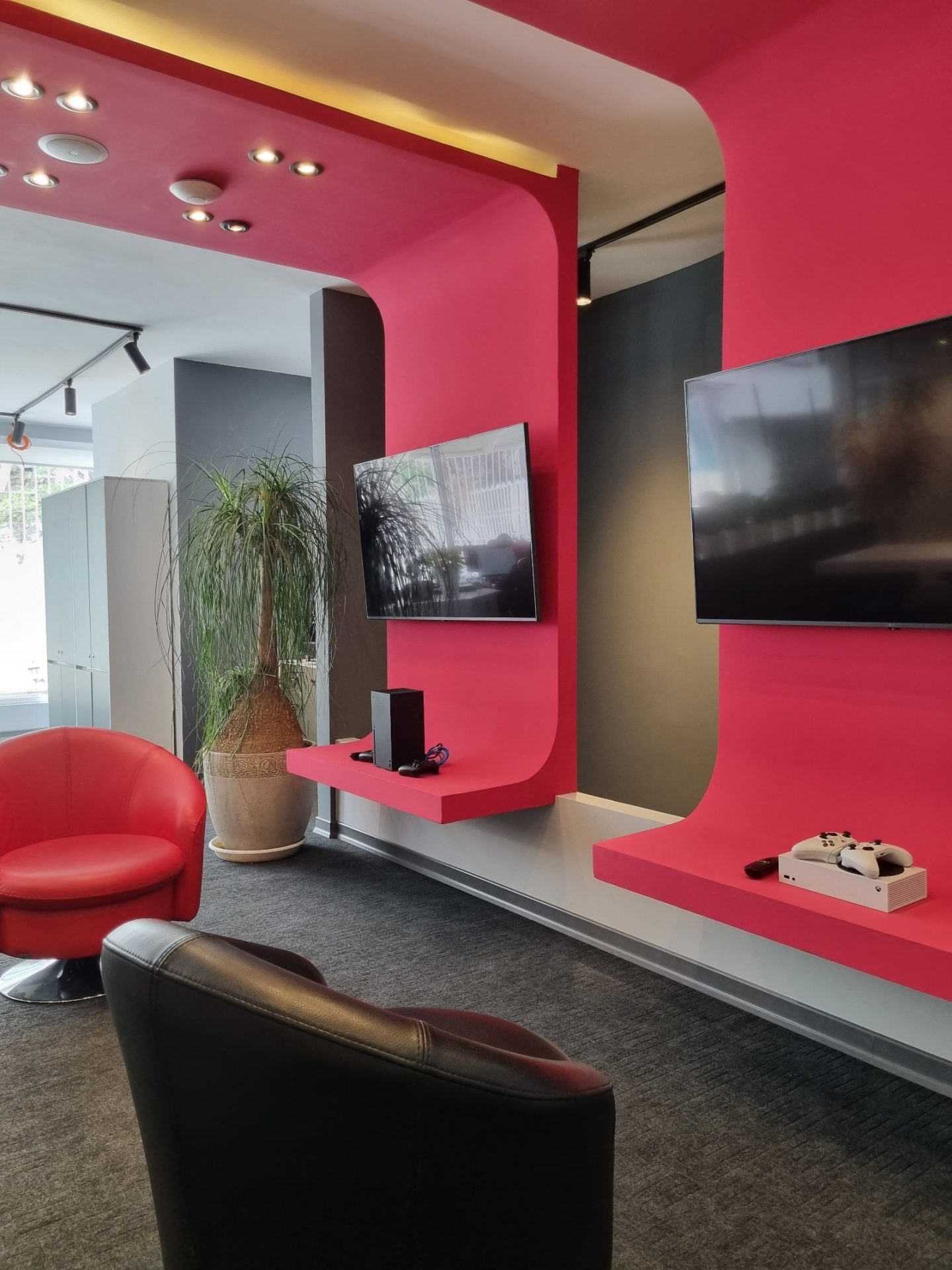
HDR photo of Galaxy S21 FE
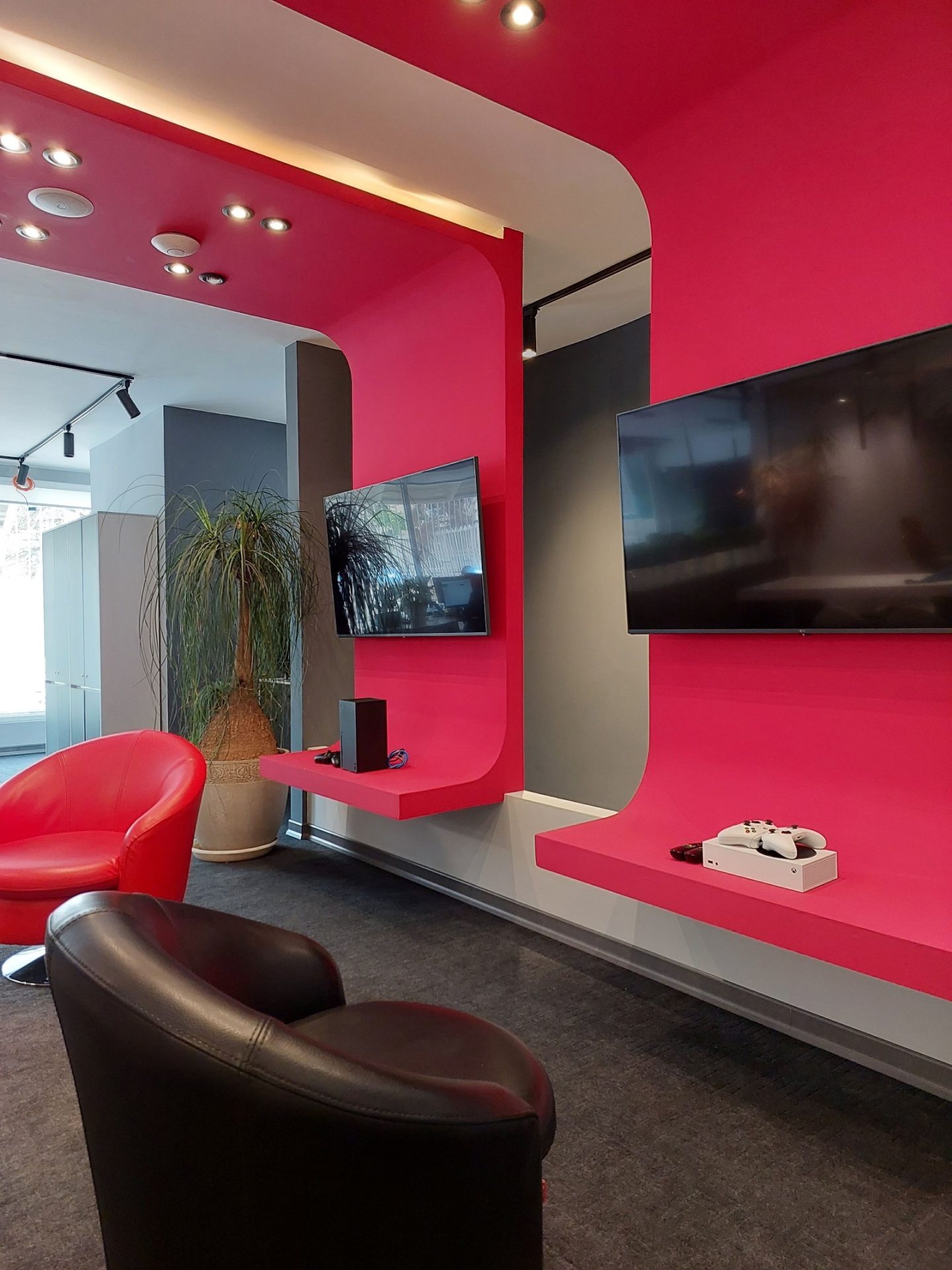
HDR image of Galaxy A73 primary camera

HDR image of Galaxy A73 ultraviolet camera
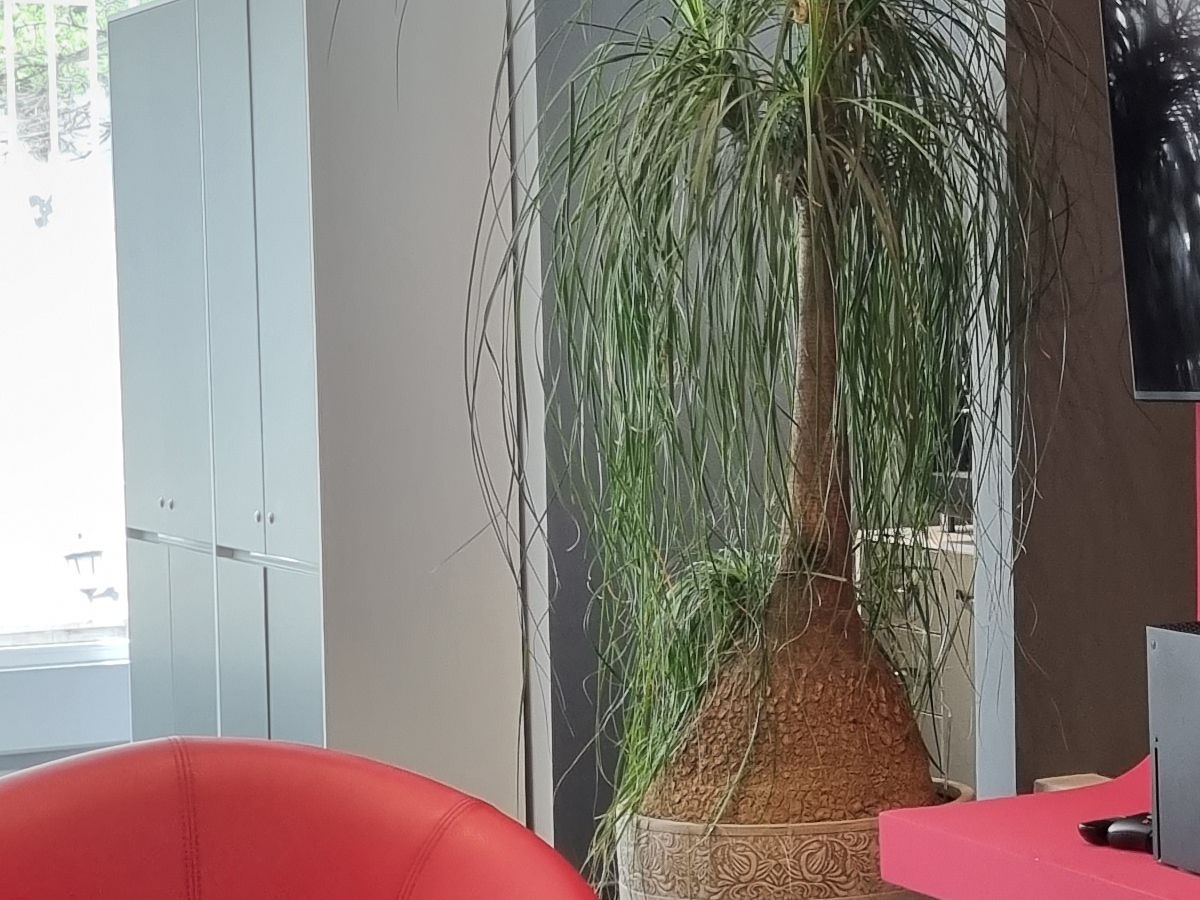
Galaxy S21 FE Photo Crop
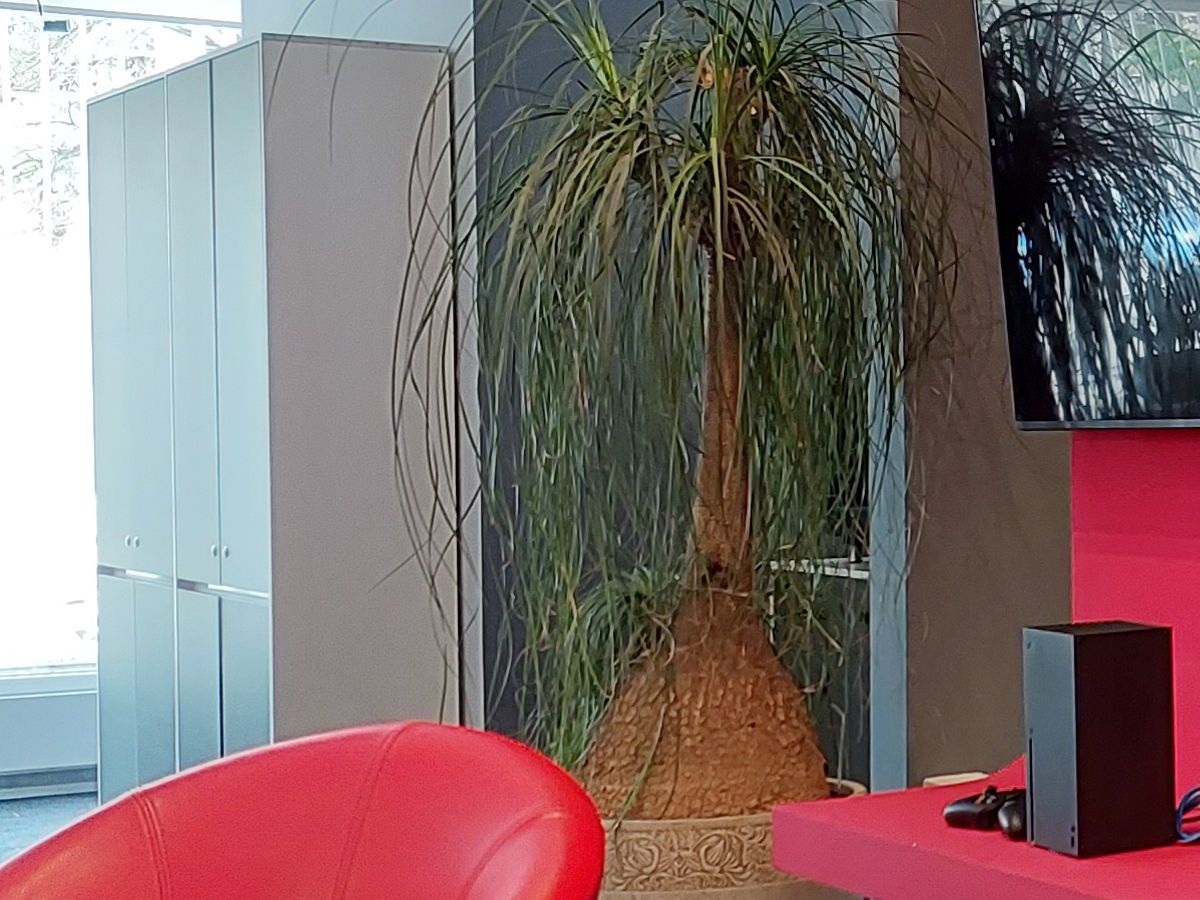
Crop the main camera photo
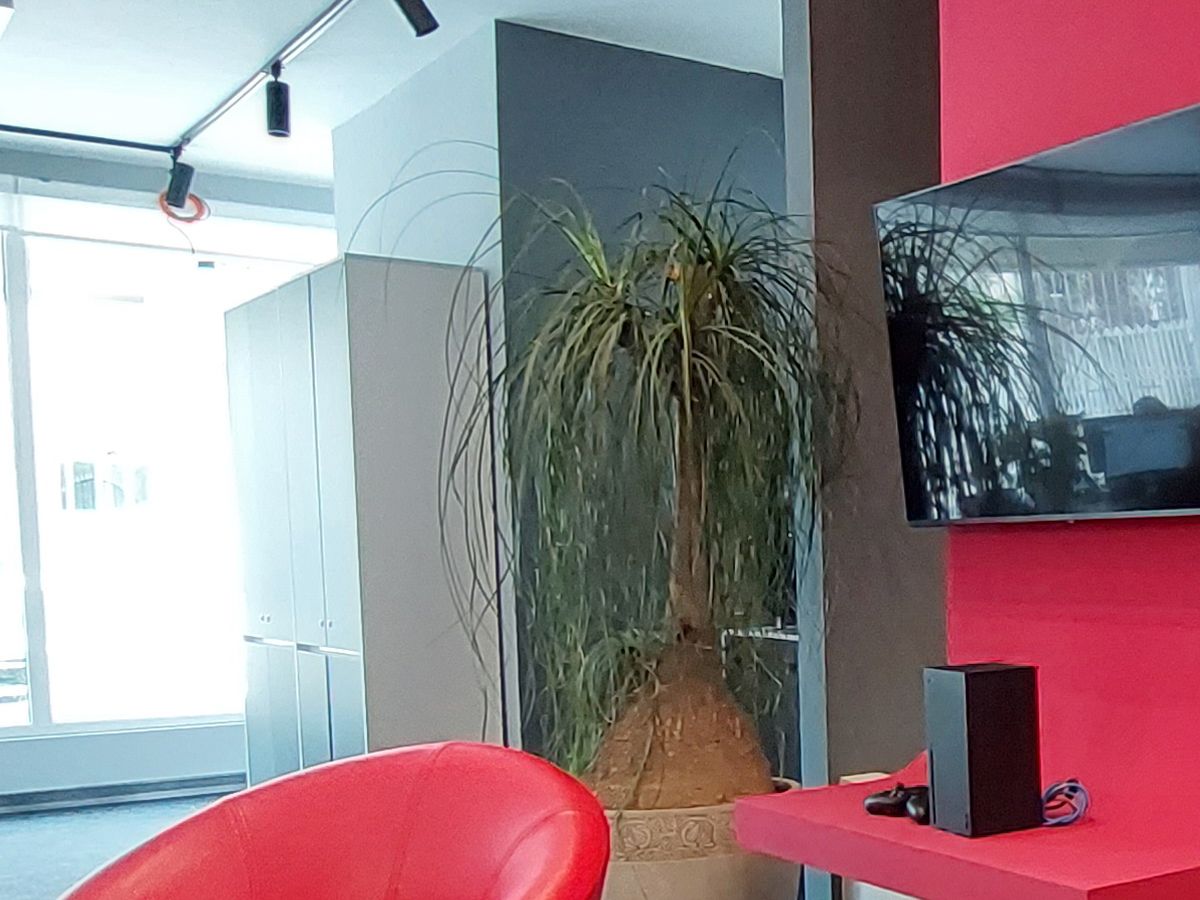
Ultraviolet camera photo crop
108 megapixel and 12-megapixel photography with the Galaxy A73
If you shoot in daylight and are very interested in exploring inside photos at the pixel level (!), The 108-megapixel mode of the Galaxy A73 can meet your needs a bit; As you can see in the screenshots below, the actual size of the 108-megapixel photo and the flat-angle cut of the 12-megapixel image is much higher in the 108-megapixel mode; Of course,, the overall picture looks softer than the 12-megapixel mode.
![]()
108-megapixel photo crop
![]()
12-megapixel photo crop
Magnification function of Galaxy A73
The Galaxy A73 does not have a telephoto camera. Still, the relatively large size of the device’s 108-megapixel primary camera allows you to take clear, attractive 4x photos with enough light and with a bit of grace.
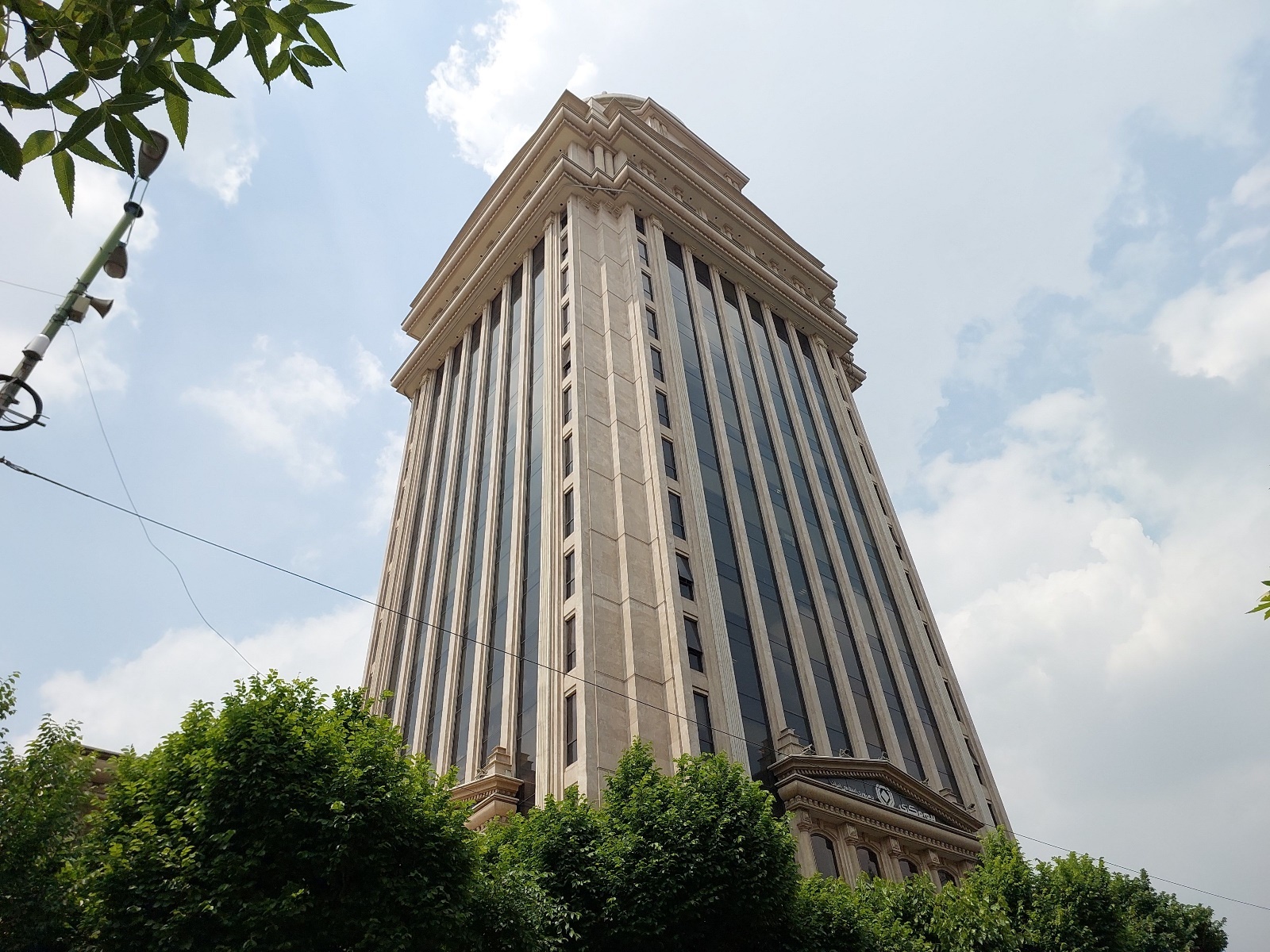
A picture of equality
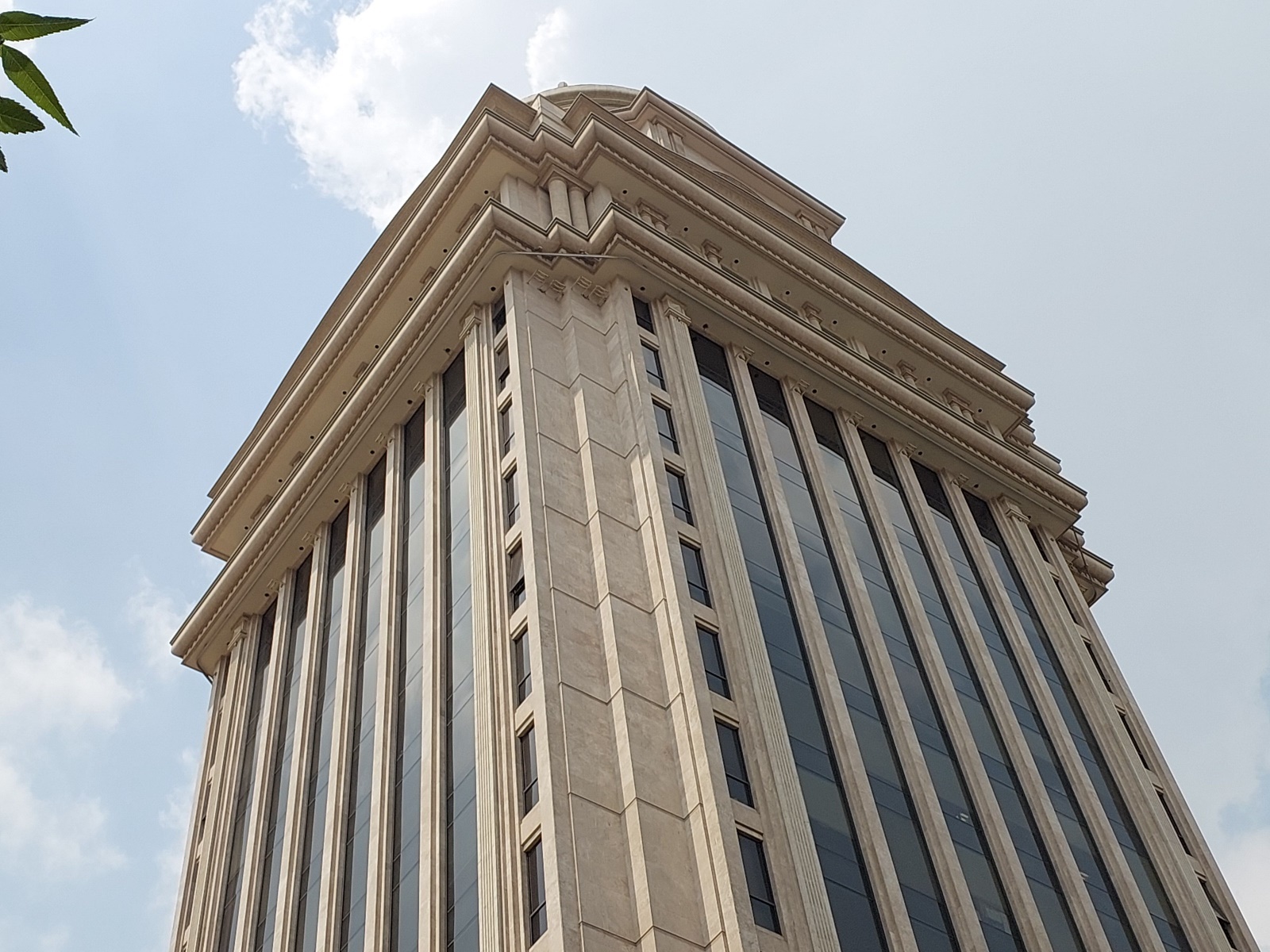
Two times photo
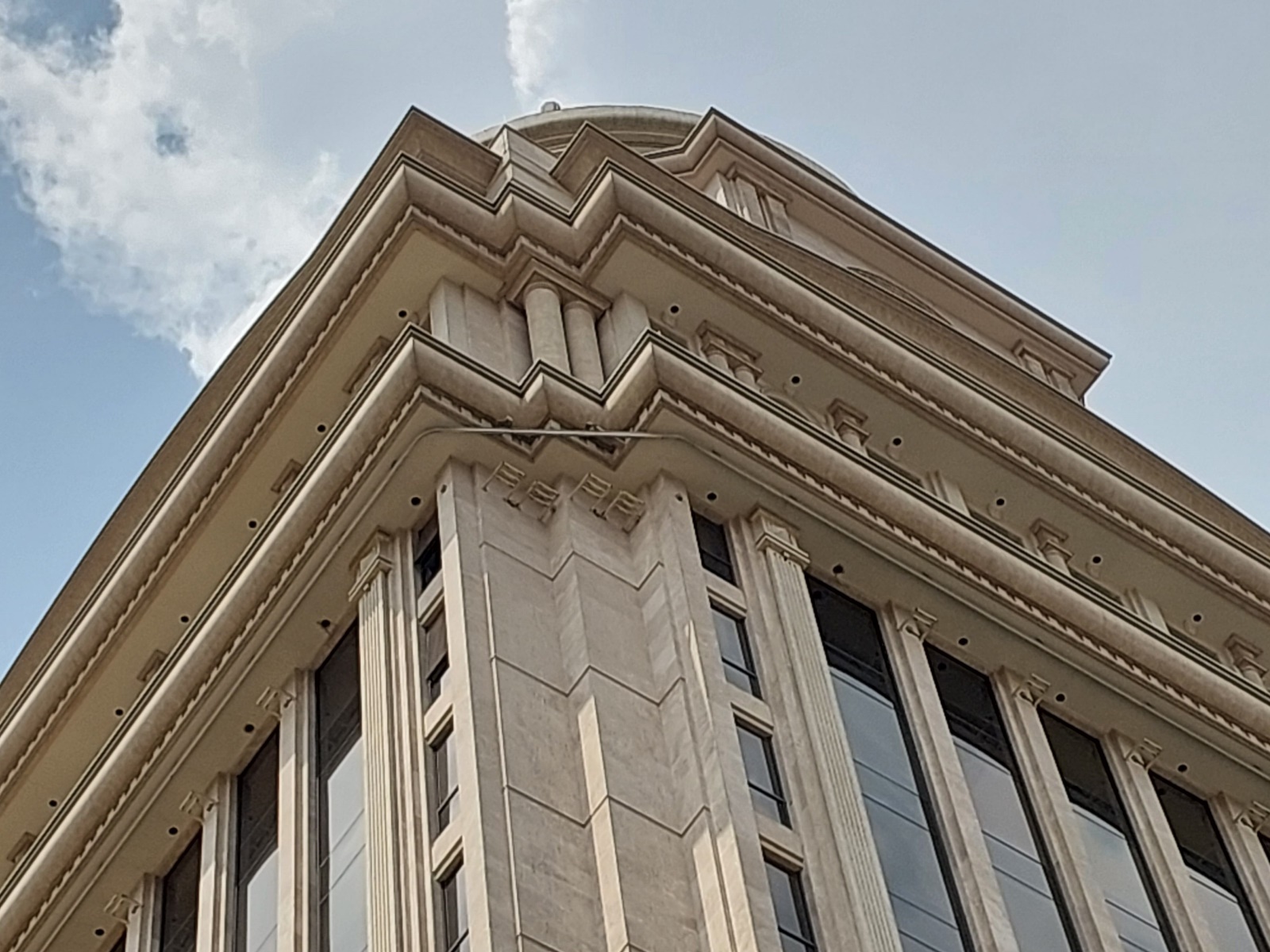
Four times photo
Shooting in the dark with the Galaxy A73
In low-light environments, the autofocus of the primary camera is challenged, So that you have to try and make mistakes several times to take a clear picture. In any case, thanks to the Night mode, you can take clear and relatively straightforward photos with the primary camera; Of course, as you can see in the picture, the Galaxy S21 FE captures more realistic colors and more detail; It looks like there is a yellow halo on the Galaxy E73 photo.

Photo of Galaxy S21 FE Night Mode

Image of Galaxy M73 Night Mode

Galaxy S21 FE Photo Crop

Galaxy A73 Photo Crop
Portrait and selfie photography with Galaxy A73
The Galaxy A73 takes portrait photos with the primary camera and does not allow you to zoom in, which makes the subject’s face shape slightly different from usual; Because portrait photos are captured more accurately with zoom cameras; In any case, the Galaxy A73 performs very well in separating the subject from the background and implementing the bokeh effect, and maintains an acceptable level of detail on the subject’s face.
The Galaxy E73 selfie camera captures photos with attractive colors and satisfying details.

Portrait photo with the primary camera

Selfie photo
Macro photography with Galaxy A73
There is no autofocus on the Galaxy A73 macro camera; capturing clear photos is challenging. Aside from the difficulty of focusing on the subject, macro shots’ colors and level of detail are satisfactory compared to the phone’s price tag.
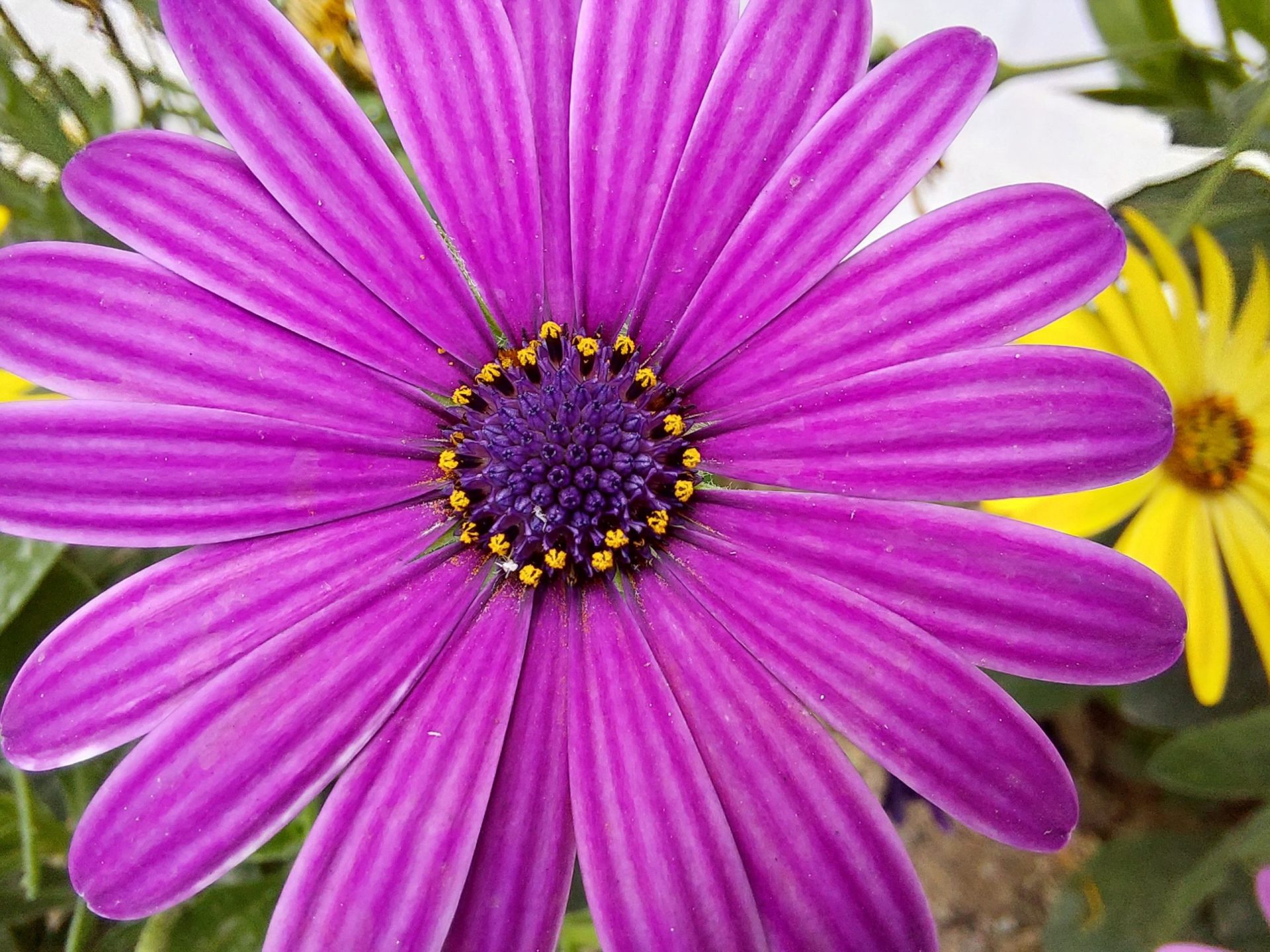
Although the primary camera’s 108-megapixel sensor supports 8K video recording at 24 frames per second, the chip’s limitations allow it to shoot at its best in 4K resolution at 30 frames per second. The Galaxy A73 can record 4K videos with wide-angle, ultraviolet, and selfie cameras and allow users to switch between cameras while shooting videos.
The Snapdragon 778G chip can 4K HDR video recording, But the Galaxy A73 does not allow this. 4K videos are recorded at 47 Mbps, giving you the desired sharpness, contrast, and colors.
Summary and comparison of Galaxy A73 with competitors
The Galaxy A73 is experiencing significant improvements over the previous generation; a Slimmer and lighter body, a more efficient primary camera, a powerful chip that outperforms low-end flagship chips such as the Exynos 2100 in some areas, such as heavy gaming, an enjoyable software experience, and Samsung’s four-year support promise; The Galaxy A73 is a full-fledged midrange; Of course, provided that we do not discuss the price!
| Comparison | Samsung Galaxy A73 5G | Xiaomi 12X | Xiaomi 11T Pro | Samsung Galaxy S20 FA 5G | Samsung Galaxy A52s 5G |
|---|---|---|---|---|---|
| connections | |||||
| Wireless Network | Wi-Fi 802.11 a / b / g / n / ac / 6, dual band, Wi-Fi Direct, hotspot | Wi-Fi 802.11 a / b / g / n / ac / 6, dual band, Wi-Fi Direct, hotspot | Wi-Fi 802.11 a / b / g / n / ac / 6, dual band, Wi-Fi Direct, hotspot | Wi-Fi 802.11 a / b / g / n / ac / 6, dual band, Wi-Fi Direct, hotspot | Wi-Fi 802.11 a / b / g / n / ac, dual band, Wi-Fi Direct, hotspot |
| Bluetooth | 5.0, A2DP, LE | 5.2, A2DP, LE | 5.2, A2DP, LE, aptX HD, aptX Adaptive | 5.0, A2DP, LE | 5.2, A2DP, LE |
| GPS | Yes, with A-GPS, GLONASS, GALILEO, BDS, QZSS | Yes, with A-GPS, GLONASS (1), BDS (3), GALILEO (2), QZSS (2), NavIC | Yes, with dual-band A-GPS, GLONASS, GALILEO, BDS | Yes, with GLONASS, BDS, GALILEO, A-GPS | Yes, with A-GPS, GLONASS, GALILEO, BDS |
| NFC | Yes (market dependent) | Yes | Yes | Yes | Yes (market dependent) |
| Radio | Unknown | No | No | No | Unknown |
| USB | – USB Type-C 2.0 – OTG support | – USB Type-C 2.0 – OTG support | USB Type-C 2.0, OTG support | Type-C 1.0 Reversible connector, OTG support | – USB Type-C 2.0 – OTG support |
| Infrared | Yes | Yes | |||
| Battery | |||||
| Battery | Non-replaceable lithium polymer battery with a capacity of 5000 mAh | Non-replaceable lithium polymer battery with a total of 4500 mAh | Non-replaceable lithium polymer battery with a total of 5000 mAh | Non-replaceable lithium-ion battery with a total of 4500 mAh | Non-replaceable lithium polymer battery with a capacity of 4500 mAh |
| Charging speed | 25-watt fast charge | – 67 watts fast charge (100% in 39 minutes) – Power Delivery 3.0 support – Quick Charge 4 support | 120-watt fast charge | – 25-watt fast charge – 15-watt wireless charge – 4.5-watt reverse charge – USB Power Delivery 3.0 support | 25-watt fast charge |
| Body | |||||
| Dimensions | 163.7 by 76.1 by 7.6 mm | 152.7 by 69.9 by 8.2 mm | 164.1 by 76.9 by 8.8 mm | 159.8 by 74.5 by 8.4 mm | 159.9 by 75.1 by 8.4 mm |
| Weight | 181 grams | 176 grams | 204 grams | 190 g | 189 grams |
| Making | Glass front, polycarbonate back, aluminum alloy frame | Glass front (Gorilla Glass Victus), glass back, aluminum frame | Glass front (Gorilla Glass 3), plastic back, aluminum frame | Glass front (Gorilla Glass 5), plastic back | |
| IP67 certified for water and dust penetration (up to 1 meter for 30 minutes) | IP53 | – Samsung P (Visa, MasterCard Certificate) – IP68 Certificate for water and dust resistance (up to 1.5 meters for 30 minutes) | IP67 certified for dust and water resistance (up to one-meter depth for 30 minutes) | ||
| SIM card | Single SIM (nano-wire) or dual hybrid SIM (nano-wire, dual stand-by) | Two SIM cards (nano-wire, one dual stand-by) | Two SIM cards (nano-wire, one dual stand-by) | Single SIM card (nano-wire or eSIM or both) or dual hybrid SIM card (nano-wire, dual stand-by) | Single SIM (nano-wire) or dual hybrid SIM (nano-wire, dual stand-by) |
| Platform | |||||
| Operating system at the time of release | – Android 12 – One UI 4.1 | – Android 12 – MIUI 13 | Android 11 | – Android 10 – One UI 2.5 | – Android 11 – One UI 3.1 |
| Chip | Qualcomm SM7325 Snapdragon 778G 5G (six nanometers) | Qualcomm SM8250-AC Snapdragon 870 5G (seven nanometers) | Qualcomm SM8350 Snapdragon 888 5G (five nanometers) | Qualcomm SM8250 Snapdragon 865 (seven nanometers +) | Qualcomm Snapdragon 778G 5G (six nanometers) |
| CPU | 8-core (quad-core 2.4 GHz Kryo 670 and quad-core 1.8 GHz Kryo 670) | Eight cores (one 3.2 GHz Kryo 585 and three cores 2.42 GHz Kryo 585, and four cores 1.80 GHz Kryo 585) | Eight cores (one 2.84 GHz Kryo 680 core and three 2.42 GHz Kryo 680 cores, and four 1.8 GHz Kryo 680 cores) | Eight cores (one core 2.84 GHz Kryo 585 and three cores 2.42 GHz Kryo 585, and four cores 1.8 GHz Kryo 585) | 8-core (quad-core 2.4 GHz Kryo 670 and quad-core 1.9 GHz Kryo 670) |
| GPU | Adreno 642L | Adreno 650 | Adreno 660 | Adreno 650 | Adreno 642L |
| Memory | |||||
| Memory port | microSDXC (using the second SIM card slot) | No | No | microSDXC (using the second SIM card slot) | microSDXC (using the second SIM card slot) |
| internal memory | 128 GB with 6 GB of RAM, 128 GB with 8 GB of RAM, 256 GB with 8 GB of RAM | 128 GB with 8 GB of RAM, 256 GB with 8 GB of RAM, 256 GB with 12 GB of RAM | 128 GB with 8 GB of RAM, 256 GB with 8 GB of RAM, 256 GB with 12 GB of RAM | 128 GB with 6 GB of RAM, 128 GB with 8 GB of RAM, 256 GB with 8 GB of RAM | 128 GB with 6 GB of RAM, 128 GB with 8 GB of RAM, 256 GB with 8 GB of RAM |
| Memory type | UFS 3.1 | UFS 3.1 | UFS 3.1 | ||
| Camera | |||||
| Main | 108 megapixels (wide-angle lens, phase-detection autofocus, optical image stabilization, f / 1.8) 12-megapixel (ultraviolet lens, f / 2.2) 5-megapixel (macro lens, f / 2.4) 2.4) | 50-megapixel (26mm wide-angle lens, phase-detection autofocus, 1 / 1.56-inch sensor size, 1.0-micrometer pixel, optical image stabilization, f / 1.9) 13-megapixel (12mm ultraviolet lens with 123-degree coverage, 1 / 3.0 Sensor size: 1.12 micrometer pixel size, f / 2.4) 5 megapixels (50mm telephoto macro lens, autofocus) | 108 megapixels (26mm wide-angle lens, 0.7 micrometer pixel size, autofocus with phase detection, f / 1.8) Megapixels (macro lens, autofocus, f / 2.4) | 12-megapixel (26mm wide-angle lens, 1 / 1.76-inch sensor size, 1.8-micrometer pixel size, f / 1.8, dual-pixel autofocus with phase detection, optical image stabilization) 8-megapixel (73mm telephoto lens, size 1 / 4.5th , 1.0 micrometer pixel size, f / 2.0, autofocus with phase detection, optical image stabilization, triple optical zoom) 12 megapixels (13mm ultraviolet lens with 123 degree coverage, 1 / 3.0 inch sensor size, 1.12 micrometer pixel size f / 2.2) | 64-megapixel (26mm wide-angle lens, 0.8-micrometer pixel size, 1 / 1.7-inch sensor size, f / 1.8, phase-detection autofocus, optical image stabilization) 12-megapixel (123-degree ultraviolet lens, 1.12-micrometer f /2.2) 5 megapixels (macro lens, f / 2.4) 5 megapixels (depth detection sensor, f / 2.4) |
| Capabilities | LED flash, panorama, HDR | Dual-tone flash (LED), panorama, HDR | Dual-tone flash (LED), panoramic | LED flash, panorama, HDR | LED flash, panorama, HDR |
| Filming | 4K @ 30fps, 1080p @ 30 / 60fps; Electronic image stabilization-gyroscopic | 8K @ 24fps, 4K @ 30 / 60fps, 1080p @ 30/120/240 / 960fps, electronic image stabilization-gyroscope | 8K, 4K, 1080p, HDR10 + | 4K @ 30 / 60fps, 1080p @ 30 / 60fps, electronic image stabilization-gyroscope | 4K @ 30fps, 1080p @ 30 / 60fps; Electronic image stabilization-gyroscopy |
| Salafi | 32 megapixels (26mm wide-angle lens, 1 / 2.8-inch sensor size, 0.8 micrometer pixel size, f / 2.2) | 32 megapixels (26mm wide-angle lens, 0.7 micrometer pixel size) | 16 megapixels (wide lens, 1.0 micrometer pixel size, f / 2.5) | 32 megapixels (26mm wide-angle lens, 1 / 2.74-inch sensor size, 0.8mm pixel size, autofocus, f / 2.0) | 32 megapixels (26mm wide-angle lens, 0.8mm pixel size, 1 / 2.8-inch sensor size, f / 2.2) |
| Selfie filming | 4K @ 30fps, 1080p @ 30fps | 1080p @ 30 / 60fps, 720p @ 120fps | 1080p @ 30fps | 4K @ 30 / 60fps, 1080p @ 30 / 60fps, electronic image stabilization-gyroscope | 4K @ 30fps, 1080p @ 30fps |
| Network | |||||
| Technology | GSM / HSPA / LTE / 5G | GSM / CDMA / HSPA / EVDO / LTE / 5G | GSM / HSPA / LTE / 5G | GSM / CDMA / HSPA / EVDO / LTE / 5G | GSM / HSPA / LTE / 5G |
| Voice | |||||
| speaker | Yes | Yes, stereo speaker | Yes, with stereo speakers | Yes, stereo speakers | Yes, with stereo speakers |
| 3.5 mm jack | Unknown | No | No | No | Yes |
| – 24-bit / 192 kHz sound – Developed by Harman Kardon | Arranged by Harman Kardon | – 32-bit / 384 kHz sound – Adjusted by AKG | |||
| Supply | |||||
| Another letter | – Galaxy S20 Fan Edition – Galaxy S20 Lite | ||||
| Introduction | March 17, 2022 | 28 December 2021 | September 15, 2021 | 23 September 2020 | 17 August 2021 |
| Condition | Available, released April 22, 2022 | Available, released December 31, 2021 | Available. Released on October 5, 2021 | Available. Released on October 2, 2020 | Available, released September 1, 2021 |
| Approximate price at the time of supply | About 500 euros | About 450 euros | About 650 euros | About 730 euros | About 400 euros |
| models | – SM-A736B – SM-A736B / DS | 2107113SG | SM-G781B | – SM-A528B – SM-A528B / DS | |
| Capabilities | |||||
| Sensors | Optical fingerprint sensor (below the display), accelerometer, gyroscope, proximity sensor, compass | Optical fingerprint sensor (below the display), accelerometer, proximity sensor, gyroscope, compass | Fingerprint sensor (next to the phone), accelerometer, gyroscope, proximity sensor, compass | Optical fingerprint sensor (below the display), accelerometer, gyroscope, proximity sensor, compass | Optical fingerprint sensor (below the display), accelerometer, gyroscope, proximity sensor, compass |
| Bixby Voice Assistant with support for dialog voice commands | + ANT | ||||
| Other | |||||
| Colors | Gray, green, white | Black, blue, pink | Gray, white, blue | White, blue, orange, green, red, pink | Black, white, light green, light purple |
| Specific Absorption Rate (SAR) | 1.14 watts per kilogram (head) | 0.72 watts per kilogram (head) | |||
| SAR EU | – 1.28 watts per kilogram (head) – 1.42 watts per kilogram (body) | – 0.88 watts per kilogram (head) – 0.84 watts per kilogram (body) | |||
| Display | |||||
| Type | Super AMOLED Plus | OLED | AMOLED | Super AMOLED capacitive touch, 16 million colors | Super AMOLED |
| Dimensions | 6.7 inches (~ 87.0% screen-to-body ratio) | 6.28 inches (~ 89.2% screen-to-body ratio) | 6.67 inches (~ 85.1% screen-to-body ratio) | 6.5 inches (~ 85.7% screen to body ratio) | 6.5 inches (~ 84.9% screen-to-body ratio) |
| resolution | 1080 by 2400 pixels, 20: 9 (~ 393 pixels per inch pixel density) | 1080 by 2400 pixels, 20: 9 (19 419 pixels per inch pixel density) | 1080 by 2400 pixels, 20: 9 (~ 395 pixels per inch pixel density) | 1080 by 2400 pixels, 20: 9 (5 405 pixels per inch pixel density) | 1080 by 2400 pixels, 20: 9 (5 405 pixels per inch pixel density) |
| Bodyguard | Corning Gorilla Glass 5 | Corning Gorilla Glass Victus | Corning Gorilla Glass Victus | Corning Gorilla Glass 3 | Corning Gorilla Glass 5 |
| – 120Hz image refresh rate of 800 nits in HBM mode | – 68 billion color display – Dolby Vision – HDR10 + support – 120Hz image refresh rate – Maximum brightness of 1100 nits | – HDR10 + support – 120Hz image refresh rate – 800 nits brightness up to 1000 nits – One billion colors – Dolby Vision support | – HDR10 + – Always-on display – 120Hz image refresh rate | – 120Hz image refresh rate – HDR10 support – 800nm brightness (HBM) | |
Samsung’s new midrange is currently selling with a price tag of around 14 to 15 million tomans. You can achieve a more or less similar experience by paying about 10 million tomans and buying the Galaxy A52s. On the other hand, with nearly one million tomans less, you can think of options such as Xiaomi 11T Pro and Galaxy S20 FE or Xiaomi 12X in 15 million tomans. The first two options are better than the A73 in terms of performance and camera, respectively, and the third option appears in all areas beyond Samsung’s mid-range.
Positive Points
- Brighter and more accurate OLED display than ever before
- Clear and expressive stereo speakers
- Optimal camera performance day and night
- Four-year software support promise
- Fast and stable performance
- Outstanding charge
Cons
- Supply without charger
- Remove the telephoto camera
- A weaker chip than competitors
- Price tag close to economic flagships
![Samsung Galaxy A73 Review [With Video Review]](https://ded9.net/wp-content/uploads/2022/05/Samsung-Galaxy-A73-Review-With-Video-Review.jpg)
